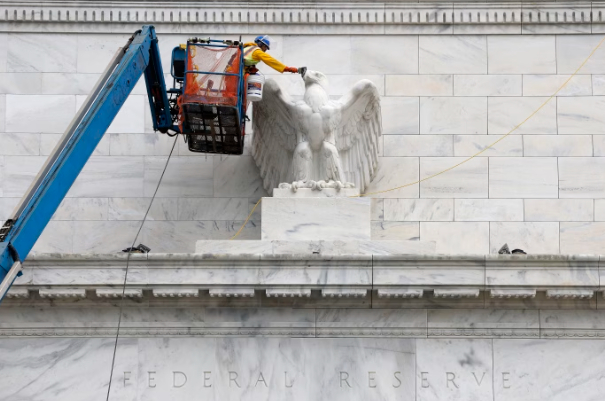
The US federal government shutdown since October 1st has had a ripple effect on the economic system. As the central institution for monetary policymaking, the Federal Reserve faces an unprecedented dilemma: how to weigh its next interest rate action amidst a complete lack of critical economic data?
The Fed's decision-making logic has always revolved around its two core objectives: inflation and employment. However, the government shutdown has temporarily halted operations of key departments such as the Department of Labor and the Census Bureau, forcing the release of "gold standard" data such as the non-farm payroll report, inflation data (CPI), and retail sales data to be delayed. These data are not only the core basis for the Fed's economic assessment, but also a bellwether for market forecasts of interest rate trends. The historical lessons of the 2013 and 2018 government shutdowns demonstrate that data gaps can directly disrupt decision-making. This shutdown, occurring just before the Fed's interest rate meeting on October 28th, creates a particularly critical data vacuum during the decision-making window.
Despite the data gap, the market remains highly betting on a further rate cut by the Fed in October, with a probability exceeding 90%. However, divisions within the Federal Reserve are becoming increasingly pronounced: some officials are concerned that signals of a cooling job market are insufficient. They believe that relying solely on private ADP employment data (a 32,000 drop in September) and fluctuating layoff data fails to fully capture the true impact of the shutdown on the public sector. Minsheng Bank Chief Economist Wen Bin noted that the current job market presents a paradoxical situation of declining job creation but stable layoffs, and that incomplete data exacerbates this difficulty. If the shutdown continues, the surge in public sector layoffs could be masked, increasing the risk of misjudgment.
In the absence of official data, the Fed is forced to rely on private data and business surveys. However, the ADP data only covers a portion of the private sector and cannot capture the wave of public sector layoffs triggered by the federal government shutdown. Business surveys are subject to sampling bias and lags. For example, during the 2018 shutdown, even though private data was still released, the market was still mired in confusion due to incomplete information. Santander economist Stephen Stanley bluntly stated, "Without aggregated government data, it's even more difficult to justify a rate cut."
The government shutdown has already caused substantial damage to the economy: a White House advisory council estimates that GDP is losing approximately $15 billion per week, with consumer spending plummeting due to the furlough of 800,000 federal employees. This shock itself creates new uncertainties, forcing the Federal Reserve to simultaneously address downside risks in a "data blind spot." If the shutdown continues, signs of an economic slowdown could compound the lack of data, forcing the Fed to cut rates with inadequate information to avoid the risk of a more severe recession.
In this data vacuum, market risk aversion has intensified: safe-haven assets like gold have soared, prompting investors to turn to fixed-income assets for safety. Companies, facing uncertainty about policy and the economic outlook, have postponed hiring and investment plans. This market reaction, in turn, complicates the Fed's decision-making process: a premature rate cut could exacerbate inflationary risks; inaction could accelerate the emergence of downward economic pressures.
The government shutdown has thrust the Fed into a "blind men and an elephant"-like decision-making game. Amidst the plight of missing official data and fragmented alternatives, the Federal Reserve must strike a delicate balance between the risks of an economic downturn and the risk of policy misjudgment. This crisis not only tests the flexibility of monetary policy but also highlights the fundamental role of data systems in modern economic governance. When the data lifeline is severed, every decision-making step becomes like moving through a fog, with profound repercussions for the US economy and global markets.

The U.S. third-quarter GDP growth rate, strikingly highlighted at 4.3%, not only surpassed market expectations but also earned the label of "the fastest in two years."
The U.S. third-quarter GDP growth rate, strikingly highligh…
Recently, US personnel intercepted a "Century" super oil ta…
According to Xinhua News Agency, the subtle changes in the …
The rapid development of artificial intelligence has brough…
In December 2025, Taiwan's political scene was shaken by a …
When Apple appears for the Nth time on the list of penaltie…